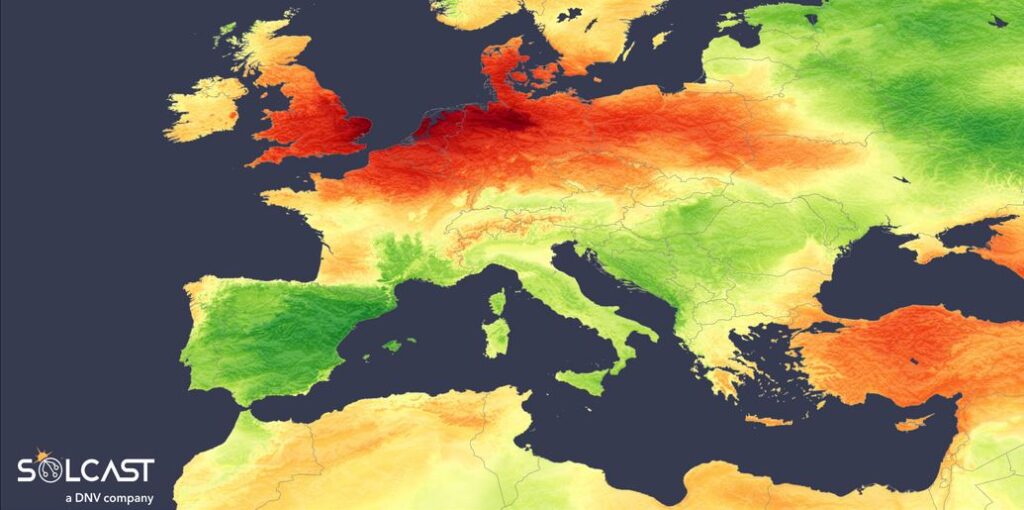In a new weekly update for PV -MagazineSolcast, a DNV company, reports that irradiation in England, the Benelux region, Denmark, Northern France, Northern Germany and North Police far above long-term Mars averages rose. In the UK, the aggregated solar radiation reached the highest march value since 2014.
Northern Europe surpassed the Mediterranean Sea in March, because unusually dry conditions led to record-breaking solar radiation and generation in the UK and Germany, according to analysis with the help of the Solcast API. A Westwart shift in the Azores blocked High Atlantic weather systems to reach North Europe, instead moisted in the Mediterranean. This trend led to a maximum of 30% above average irradiation in parts of Northern Europe, while irradiation in traditional southern vacationplaces fell no less than 30% below the seasonal standards.
Irradiation in England, the Benelux region, Denmark, Northern France, Northern Germany and northern poles rose well above long-term Mars averages. For the UK and wider North Europe it was an unusually dry month, with limited frontal activity. This was powered by the Westwart relocation of the Azores High, which resulted in a more persistent high -pressure blocking over the north of the continent and limited the usual stream of Atlantic Lows. The result was stable, sunny conditions ideal for solar radiation.
The increase in the radiation thrust in North Europe was reflected in various rasteraggregations in the region. Germany in particular saw his second highest Mars irradiation in more than ten years.
In the UK, the aggregated solar radiation reached the highest marswaard since 2014. The British rasteraggregation has increased steadily, with capacity growth playing a key role in a higher solar output, especially during sunny months. This trend is in line with the increase in March 2024, which shows how both weather conditions and the growth capacity drive the solar generation to new highlights.
In the meantime, the Mediterranean region experienced a contrasting story. The same atmospheric blocking that benefited the north -coated atlantic moisture much further south south of the south. This brought a wave of cloud cover and precipitation to the Mediterranean that resulted in an unusually wet month. The majority of Spain, including large solar nodes in the south and central plateau, registered radiation values 30% under March standards. The French Mediterranean coast, the Italian Riviera and the islands of Corsica, Sardinia and Sicily also registered radiation drops of up to 20%. A similar shortage reached to the east of the Balkans to the Barban region, all of which experience continuing cloudy skies and frequent rain systems.
Dissolved Produces these figures by following clouds and aerosols with a resolution of 1-2 km worldwide, with the help of satellite data and own Ai/ml -algorithms. This data is used to stimulate radiation models, so Solcast is able to calculate the radiation at high resolution, with a typical distortion of less than 2%, and also cloud-tracking predictions. This data is used by more than 300 companies that manage more than 150 GW of solar assets worldwide.
The views and opinions expressed in this article are the author, and do not necessarily reflect it by PV -Magazine.
This content is protected by copyright and may not be reused. If you want to work with us and reuse part of our content, please contact: editors@pv-magazine.com.
Popular content





